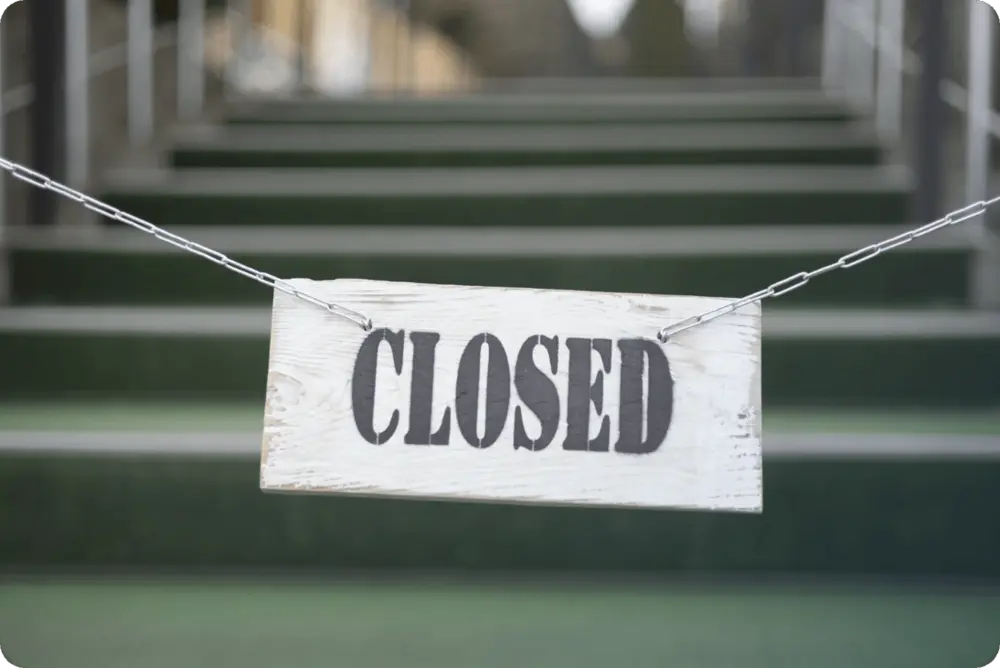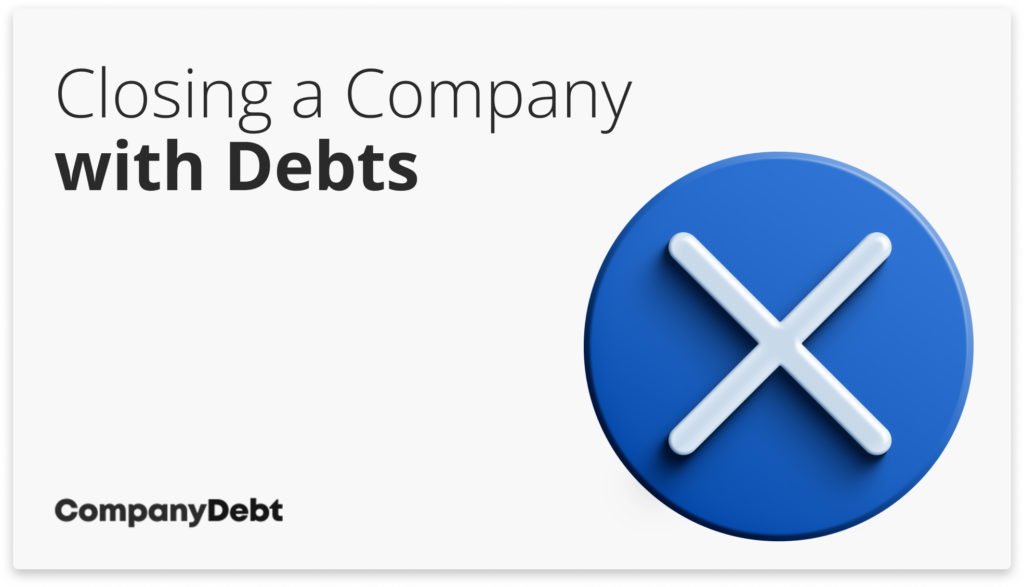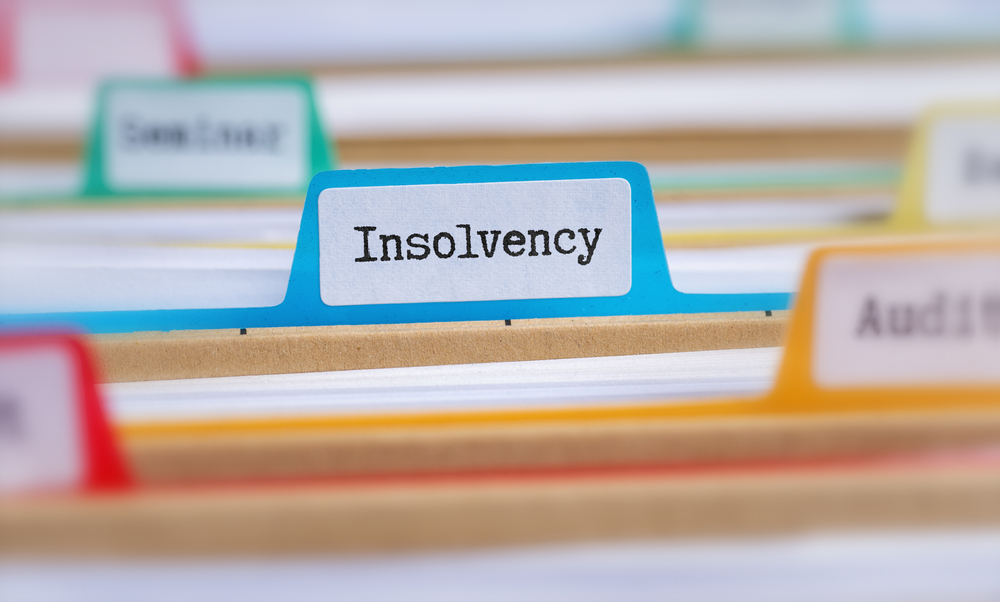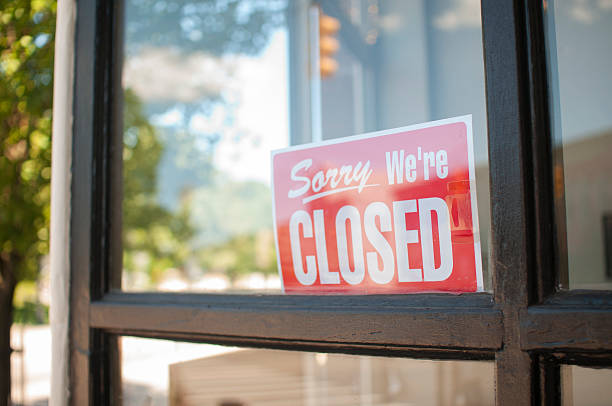
Closing a Company With Debts
- Can I Close a Company With Debts?
- 3 Ways to Close a Company With Debts
- Can I Close a Company with Debts and Start Again?
- Closing a Company With Debts to HMRC
- What Happens to Debt When You Close a Limited Company?
- Can I Walk away From a Limited Company with Debt?
- Advice on Closing a Company with Debts
- Choosing the Right Path: Expert Advice and Next Steps
- FAQs on Closing a Company with Debts
Can I Close a Company With Debts?
Yes, it is possible to close a company even if it has outstanding debts, but there are specific procedures that must be followed.
In the UK, the primary method for directors to voluntarily wind down an insolvent company is through a process known as Creditors’ Voluntary Liquidation (CVL)[1]Trusted Source – GOV.UK – Liquidate your limited company. This process allows company directors to take a proactive approach to dealing with debts, helping to mitigate the impact on creditors and ensuring a structured dissolution of the company’s affairs.
Any debts not paid for by selling company assets are written off with the closure of the company.
Another method, although not initiated voluntarily by directors, is Compulsory Liquidation, which occurs following a court order, often at the behest of creditors.

3 Ways to Close a Company With Debts
Creditors Voluntary Liquidation
Choosing a Creditors Voluntary Liquidation (CVL) is a step you should consider if your company cannot pay its debts and you want to close it down responsibly. This process must be carried out with the help of a licensed insolvency practitioner.
A CVL involves bringing in an insolvency practitioner to act as an unbiased third party. Their job is to oversee the process, making sure that everything is done fairly and that the creditors receive as much as possible from the company’s remaining assets. After the creditors have been paid from the available funds, any debts that can’t be covered are typically written off.
Doing nothing and hoping the situation resolves itself isn’t advisable. If creditors are pressing for payment, they may push your company into compulsory liquidation. This scenario is far less favourable for you as a director because it takes the control out of your hands and can lead to harsher scrutiny of your conduct. Opting for a CVL, on the other hand, is a proactive approach that can help protect your reputation and potentially avoid personal liability issues, making it the preferable route when facing insolvency
Strike Off
If your company has debts, but you wish to avoid the formalities and complexities of liquidation, one option is to settle those debts yourself and then apply for a “Strike-off” to dissolve the company[2]Trusted Source – GOV.UK – Strike off your limited company from the Companies Register. This approach can be both cost-effective and straightforward, provided you adhere to the following steps and requirements.
Firstly, you need to ensure that your company has ceased trading for at least three months. During this period, you must settle all debts and obligations, including payments to suppliers, creditors, and HMRC. Make sure to also fulfil any contractual obligations, such as employment contracts.
Once all debts are settled, you can apply to the Companies House for a Strike Off by submitting Form DS01. There is usually a small fee involved in filing this application. After submitting, you must also inform stakeholders, including creditors, employees, and directors, by sending them a copy of the form within seven days.
Note that even after dissolution, directors could be held personally responsible for any undisclosed debts or liabilities. Therefore, comprehensive record-keeping and documentation are imperative throughout this process.
NB: While some websites suggest you can simply dissolve a business with debts, HMRC makes it clear this is not the case, and they will object to any attempt to strike off the company.
Compulsory Liquidation
If a company does not pay its debts, creditors, including HMRC, can petition the court to force the company to close. This process is known as compulsory liquidation.
When a company is subject to compulsory liquidation, it loses control over the liquidation process. A liquidator is appointed by the court, not the company’s directors, and the primary goal is to sell all assets to repay creditors. This can lead to a less favourable outcome for all parties involved, especially for company directors who may face scrutiny over their conduct leading up to the insolvency.
Can I Close a Company with Debts and Start Again?
Yes, it is possible to close a company with outstanding debts and start a new business. This approach allows for a fresh start, potentially free from the burdens of previous debts. However, it’s important to understand the legal and ethical considerations involved in this process.
Liquidating your existing company through a CVL and starting a new business involves several legal stipulations, especially concerning the reuse of a similar company name and the transfer of assets. The law aims to prevent “phoenixing“, a term used to describe the reformation of a company under a similar name to avoid debts. Directors must adhere to specific conditions under the Insolvency Act 1986 to legally start a similar business post-liquidation.
- Purchase of Assets: If the new company wants to use the assets of the old company, it must be done at market value and typically under the supervision of an appointed insolvency practitioner.
- Reusing a Company Name: There are strict rules about reusing or using a similar name to the liquidated company. Exceptions to these rules require specific legal processes and notifications to be followed, including court approval or a notice in the Gazette.
Closing a Company With Debts to HMRC
If you’re facing closure due to HMRC debts, you need to be cautious as HMRC is the UK’s largest issuer of winding up petitions. This is a method of using the court to force a company into compulsory liquidation.
Opting for voluntary liquidation before being forced into compulsory winding up allows directors to retain more control over the process.
To avoid this eventuality, You have two main options:
- Settle the debts: Work with HMRC to make payment arrangements and then dissolve your company through Companies House.
- Arrange a Creditors’ Voluntary Liquidation (CVL): Appoint an insolvency practitioner to sell assets and repay creditors, including HMRC, to the best of their ability.
What Happens to Debt When You Close a Limited Company?
When you close a limited company through a formal process like a Creditors Voluntary Liquidation (CVL), the assets of the company are sold off, and the proceeds are used to pay back creditors as much as possible. After this process, any debts that cannot be covered by the sale of assets are generally written off, effectively ending with the closure of the company. This means the company’s debts do not carry over to the directors personally, thanks to the protection offered by the limited liability structure, with notable exceptions.
If there has been wrongful trading, personal guarantees by directors, or overdrawn directors’ loan accounts, directors could be personally liable for those specific debts. Otherwise, the remaining unpaid debts are typically extinguished once the company is formally dissolved.
Can I Walk away From a Limited Company with Debt?
Yes, it is possible to walk away from a limited company, even if it has debts. However, there are some important things to keep in mind:
- If the company is insolvent, you may be held personally liable for its debts if you have not acted properly. This could include if you have continued to trade while the company was insolvent, or if you have misappropriated company assets.
- If you have given personal guarantees for any company debts, you will be personally liable for those debts, even if you walk away from the company.
- You must follow the correct procedures to close down the company. This involves notifying Companies House and HMRC, and settling any outstanding debts.
Advice on Closing a Company with Debts
If you’re considering closing your company due to debts, the most critical action you can take right now is to seek professional advice. At Company Debt, we can provide you with the bespoke guidance you need to navigate this challenging period with clarity.
We’ll help you understand the options available to you, such as voluntary liquidation, administration, or a Company Voluntary Arrangement (CVA), and advise on the most appropriate course of action for your specific situation. Of course, closure may not be the only option, there may be solutions involving business recovery and turnaround.
If you do decide to liquidate, personal guarantees, overdrawn directors’ loans, and misfeasance are significant areas of concern that need careful consideration to avoid personal impact and legal complications during the liquidation process.
Choosing the Right Path: Expert Advice and Next Steps
Facing a company closure? Don’t navigate the complexities alone. Get expert advice from our team of licensed insolvency practitioners at Company Debt. With over 100 years of combined partner experience and accreditations from professional bodies like R3 and the Insolvency Practitioners Association, we can help you understand your options and explore the best course of action for your situation.
Our services include comprehensive financial analysis, negotiations with creditors, and assistance with legal filings. We are committed to protecting your interests and those of your creditors, and all discussions are held in strict confidence.
Speak directly with one of our experienced advisors by calling 0800 644 6080. This initial consultation is free and can help clarify your options and the best path forward.
If you prefer written communication or need to provide detailed information about your situation, email us at info@companydebt.com. An advisor will respond promptly to discuss your enquiry further and provide transparent pricing information for our services.
FAQs on Closing a Company with Debts
How will the company’s assets be sold in order to pay off its debts?
In a voluntary liquidation, the liquidator will be responsible for selling off the company’s assets in order to pay off its debts. The liquidator will typically begin by identifying and valuating all of the company’s assets, which may include property, inventory, equipment, and accounts receivable. They will then take steps to market and sell these assets to the highest bidder.
The liquidator may choose to sell the assets through auction, private sale, or a combination of both. Depending on what will yield the best results, they may also sell the assets in bulk or piecemeal. The liquidator will use the proceeds from the sale of the assets to pay off the company’s debts, starting with secured and then unsecured creditors. Any remaining funds will be distributed to the shareholders by their shareholdings.
How will the company’s creditors be notified of the closure and given an opportunity to make a claim against the company’s assets?
The liquidator will contact all known creditors, providing them with information on the liquidation process and how to make a claim.
The notice will typically include the following information:
- The date the company went into liquidation
- The name and contact information of the liquidator
- Details of the claims process, including deadlines for making a claim and the documentation that will be required
- Information about any meetings or other events that will be held in relation to the liquidation
- Instructions on how to check if a claim has been accepted or rejected
How will the company’s employees be affected by the closure, and what compensation or support will be provided to them?
When a company is closed, its employees will typically be made redundant, which means that they will lose their jobs. The liquidator will be responsible for providing the employees with information about their rights, including any redundancy pay or other benefits to which they may be entitled. The amount of compensation and the type of support provided will vary depending on th
Do I need to pay the company’s debts if I close it?
No, once the company is in a formal liquidation process like a CVL, the responsibility for paying off the debts falls to the liquidator from the company’s asset sales. Directors are not required to pay the debts unless they’ve given personal guarantees.
What is the role of an insolvency practitioner in closing a company with debts?
An insolvency practitioner (IP) manages the closure process, sells assets, deals with creditors, and ensures legal compliance. They also investigate the company’s affairs and directors’ conduct before closure.
Can creditors stop me from closing my company?
Creditors can influence the closure process. If they disagree with a proposed voluntary process, they may force a compulsory liquidation by applying to the court. Engaging with creditors early can help manage this risk.
How long does it take to close a limited company with debts?
The timeframe varies depending on the complexity of the company’s affairs. A CVL can take several months to a year or more if the asset and debt situation is complex.
Are there alternatives to closing a company with debts?
Yes, alternatives include informal arrangements with creditors, a Company Voluntary Arrangement (CVA), or administration if there’s a viable business to save. Each option should be discussed with an insolvency practitioner.
The primary sources for this article are listed below, including the relevant laws and Acts which provide their legal basis.
You can learn more about our standards for producing accurate, unbiased content in our editorial policy here.
- Trusted Source – GOV.UK – Liquidate your limited company
- Trusted Source – GOV.UK – Strike off your limited company from the Companies Register








